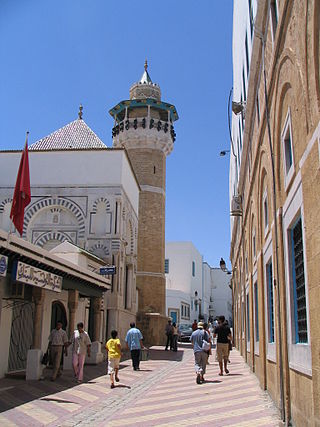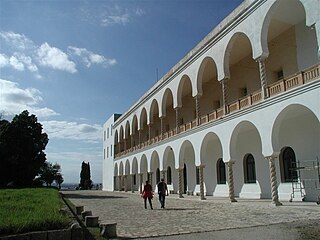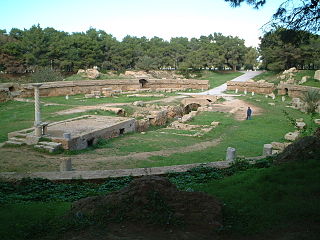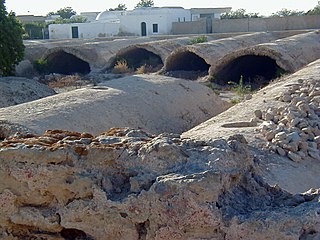15 Sights in Tunis, Tunisia (with Map and Images)
Legend
Premium Sights
Book tickets, guided tours and activities in Tunis.
Guided Free Walking Tours
Book free guided walking tours in Tunis.
Welcome to your journey through the most beautiful sights in Tunis, Tunisia! Whether you want to discover the city's historical treasures or experience its modern highlights, you'll find everything your heart desires here. Be inspired by our selection and plan your unforgettable adventure in Tunis. Dive into the diversity of this fascinating city and discover everything it has to offer.
Sightseeing Tours in TunisActivities in Tunis1. Bab el Bhar

Bab el Bhar, also known as Porte De France, is a city gate in Tunis, the capital of Tunisia. It marks the separation between the Medina of Tunis and the modern city. The gate is made up of a lowered archway and topped by a crenellated parapet.
2. Mosque
Youssef Dey Mosque, also known as Al B'chamqiya, is a 17th-century mosque in Tunis, Tunisia, located in Medina area of the city. The mosque is considered significant as it was the first Ottoman-Turkish mosque to be built in Tunis.
3. Mosque
The al-Hawa Mosque, also known as the Tawfiq Mosque, is a historic mosque in Tunis, Tunisia. It was first built in the 13th century under the Hafsids and later renovated in the 18th century under the Husainids. It is an official Historical Monument.
4. Mosque
Saheb Ettabaâ Mosque, also known as Youssef Saheb Al Tabaa Mosque, is a mosque in Tunis, Tunisia, located in the Halfaouine area of the city. It is an official Historical Monument. It is the last great mosque built in Tunis before the establishment of French protectorate in 1881.
5. Ennejma Ezzahra
Ennejma Ezzahra, sometimes spelled Nejma Ezzohara, also The Palace of the Baron d'Erlanger is a historical palace at Sidi Bou Said, in northern Tunisia, built from 1912–1922 by Baron Rodolphe d'Erlanger (1872–1932) as his home in Tunisia. It is considered to be an outstanding example of Arab-Islamic architecture in Tunisia and was built historic elements by craftsmen from Tunisia. After the independence of Tunisia in 1956, it was the first museum to be opened in the country.
6. كاتدرائية تونس
The Cathedral of St. Vincent de Paul is a Roman Catholic church located in Tunis, Tunisia. The cathedral is dedicated to Saint Vincent de Paul, patron saint of charity. It is the episcopal see of the Archdiocese of Tunis and is situated at Place de l'Indépendence in Ville Nouvelle, a crossroads between Avenue Habib Bourguiba and Avenue de France, opposite the French embassy.
7. Carthage National Museum
Carthage National Museum is a national museum in Byrsa, Tunisia. Along with the Bardo National Museum, it is one of the two main local archaeological museums in the region. The edifice sits atop Byrsa Hill, in the heart of the city of Carthage. Founded in 1875 as the "Musée Saint-Louis" within the Chapelle Saint-Louis de Carthage in order to house the finds from the excavations of Alfred Louis Delattre, it contains many archaeological items from the Punic era and other periods.
8. Antoninus Therms
The Baths of Antoninus or Baths of Carthage, located in Carthage, Tunisia, are the largest set of Roman thermae built on the African continent and one of three largest built in the Roman Empire. They are the largest outside mainland Italy. The baths are also the only remaining Thermae of Carthage that dates back to the Roman Empire's era. The baths were built during the reign of Roman Emperor Antoninus Pius.
9. Amphithéâtre de Carthage
The Carthage Amphitheatre was a Roman amphitheatre constructed in the first century CE in the city of Carthage, Tunisia, which was rebuilt by Dictator Julius Caesar and became the capital of Africa Proconsularis.
10. Tophet de Salammbô

The Carthage tophet, is an ancient sacred area dedicated to the Phoenician deities Tanit and Baal, located in the Carthaginian district of Salammbô, Tunisia, near the Punic ports. This tophet, a "hybrid of sanctuary and necropolis", contains a large number of children's tombs which, according to some interpretations, were sacrificed or buried here after their untimely death. The area is part of the Carthage archaeological site, a UNESCO World Heritage Site.
11. صهاريج مالجا
The Cisterns of La Malga or Cisterns of La Mâalga are a group of cisterns, which are among the most visible features of the archaeological site of Carthage near Tunis, Tunisia. They are some of the best preserved Roman cisterns.
12. المسرح البلدي بتونس
The Théâtre municipal de Tunis in Tunisia, Built in the Art Nouveau style on Avenue Jules-Ferry, was first opened on November 20, 1902 and currently showcases opera, ballet, symphonic concerts and dramas featuring numerous Tunisian, Arab and international actors. It was then called the Municipal Casino of Tunis.
13. St Augustine and St Fidelis Church
The Church of St. Augustine and Saint Videl, with the valley, is a Catholic Church located in the city of Shala Al -Wadi on the outskirts of Tunis in Tunisia. The church is managed by the monastic monasticism, in the middle of the small neighborhood of Sicily on the outskirts of the capital. Even if we have found the records of nationals since the year 1838, the current church began to be built in 1848, and the works ended in 1872. After that, a lot of kinetic place started with the Hajj in the Notre Dame de Trapani Church and the procession that was being held in the city, my father was lasting for the last time on August 15, 1965. Since 2007, the building has been subject to restoration and maintenance works, and Italian painter Alberto Bogani has changed the adornment of the church. The church receives an English -speaking community, especially Africans, every Sunday during the Divine Liturgy. A group of sisters of the nuns of love lives in the same place, by taking care of several grandmother's grandfather who want to end their lives in Tunisia. A group of parents of the mission group, who are called Lazreen, came to an erection in the same place in September 2011.
Wikipedia: كنيسة القديس أوغسطينوس والقديس فيديل بحلق الوادي (AR)
14. Îlot de l'Amirauté
The Carthage Punic Ports were the old ports of the city of Carthage that were in operation during ancient times. Carthage was first and foremost a thalassocracy, that is, a power that was referred to as an Empire of the Seas, whose primary force was based on the scale of its trade. The Carthaginians, however, were not the only ones to follow that policy of control over the seas, since several of the people in those times "lived by and for the sea".
15. ساحة المنجي بالي
Mongi Bali Square is one of Tunis's squares, located between Gamal Abdel Nasser Street and Avenue El Mahatta Street. It is close to Tunis Train Station, Barcelona Square, and opposite the statue is the Italian Embassy. Since 1962, this square has been centered by the statue of the scout leader Mongi Bali.
Share
How likely are you to recommend us?
Disclaimer Please be aware of your surroundings and do not enter private property. We are not liable for any damages that occur during the tours.










